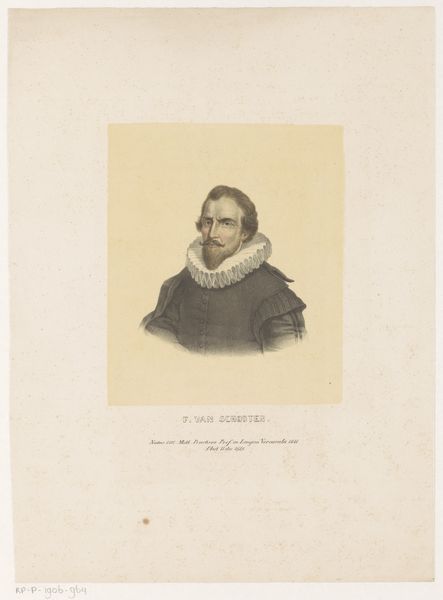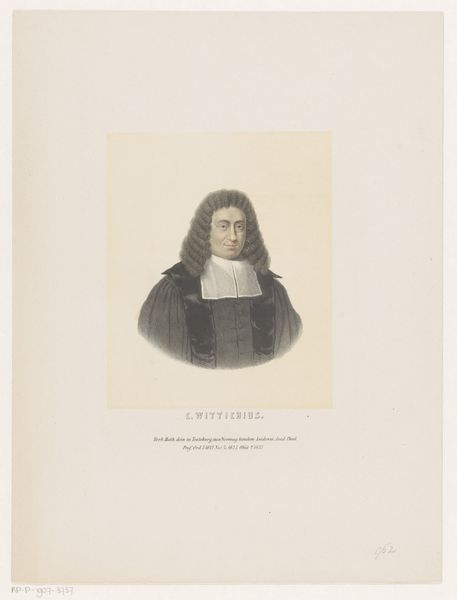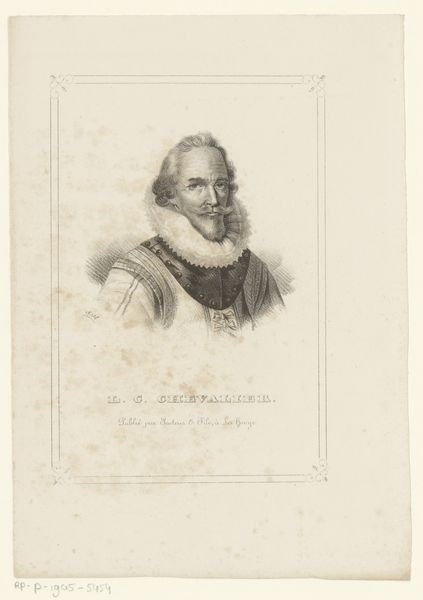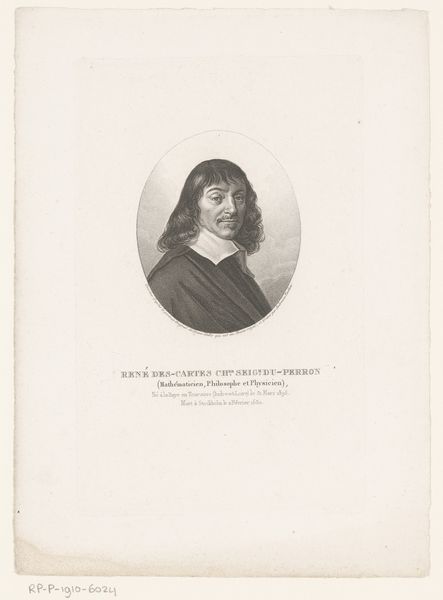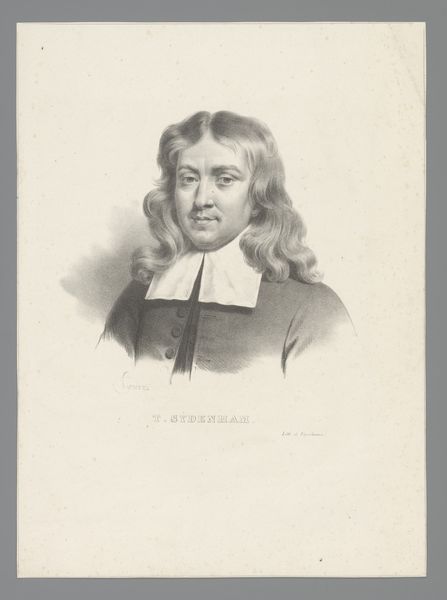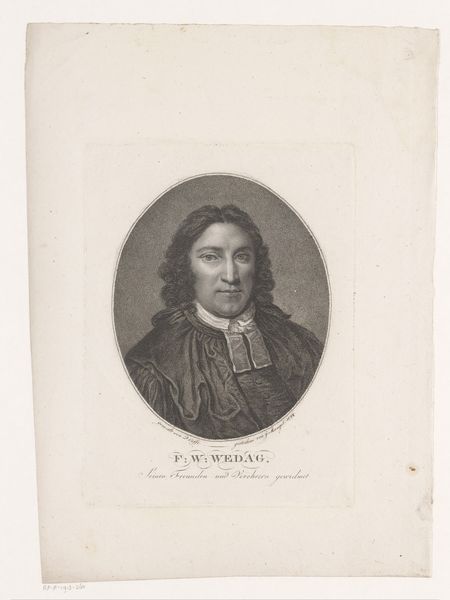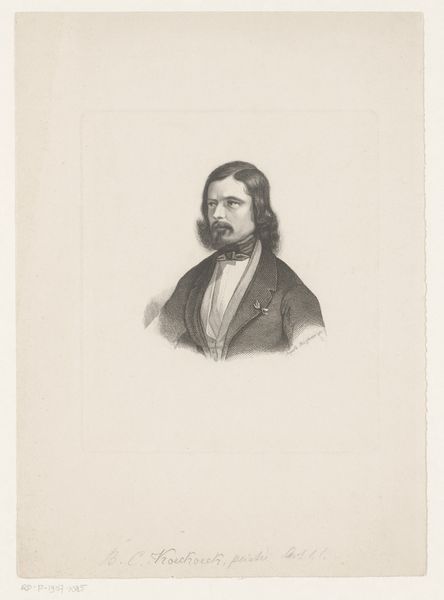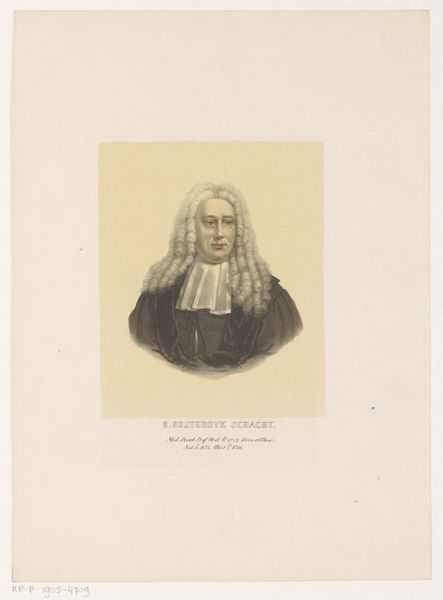
#
pencil drawn
#
shape in negative space
#
light pencil work
#
negative space
#
white clean appearance
#
pencil sketch
#
light coloured
#
pencil drawing
#
tonal art
#
remaining negative space
Dimensions: height 245 mm, width 160 mm
Copyright: Rijks Museum: Open Domain
This is a portrait of Govert 't Hoen, made by Paulus Jolly in the 19th century. It’s a reproduction made using a technique called lithography, a printing process that democratized image-making. The portrait's creation relied on the properties of limestone, on which the image was drawn with a greasy crayon, allowing ink to adhere only to the design when printed. Lithography was distinct from traditional methods like etching or engraving, which required highly skilled artisans. This process, on the other hand, enabled more affordable and quicker reproductions, influencing the distribution of images and knowledge in society. Lithography contributed to the rise of mass media and visual culture. The creation of multiple copies allowed for wider circulation, impacting how people consumed art and information. By looking at its method, we can see how the portrait democratized art, challenging traditional hierarchies between handmade and mass-produced images.
Comments
No comments
Be the first to comment and join the conversation on the ultimate creative platform.
